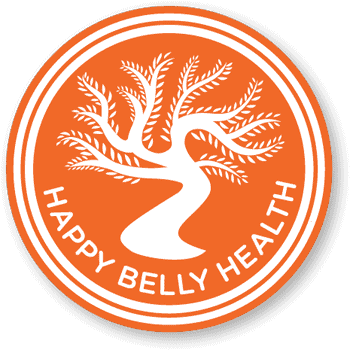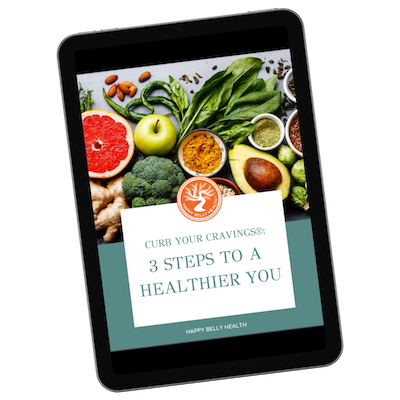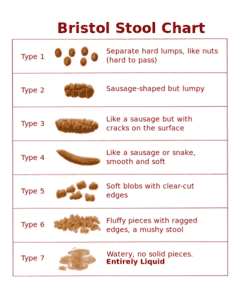You do not have to drink milk to be healthy.
Blasphemy! I know.
In fact, dairy foods like milk may be part of why you don’t feel spectacular every day. No matter how many mustache-bearing, hot models you see say otherwise, milk does not necessarily “do a body good.”
The Dairy Myth: Do We Really Need Milk to Thrive?
The American Dairy Association would have us believe that without a daily glass (or two, or four) of milk, we’re destined to die early—or at the very least, fall and break something important. But the truth is, there are entire countries where people never eat dairy foods, yet they still thrive, get plenty of calcium in their diets, and even have Olympic teams.
Did you know that over two-thirds (more than 66%) of the world’s population has some degree of lactose intolerance? This means their bodies lack an enzyme called lactase, making it difficult to digest milk properly. The result? Bloating, flatulence, diarrhea, and other IBS-like symptoms. It’s a gastrointestinal issue (GI) that can be 100% cured if you simply stop eating dairy foods.
If you’re suffering from these symptoms, it might be time to make a change. Just choose to stop consuming dairy, and you could see a significant improvement in your digestive health.
The Hidden Dangers of Dairy: It’s More Than Just Lactose Intolerance
Lactose intolerance is just the tip of the iceberg when it comes to dairy-related issues. For many, dairy foods are highly inflammatory, ranking among the top three food sensitivities in the U.S. Beyond digestive discomfort, dairy sensitivity can manifest in a variety of ways, including:
- Post-nasal drip
- Achy joints or muscles
- Skin inflammation like eczema
- Weight loss struggles
- Low energy
Unlike lactose intolerance, which is a gastrointestinal (GI) issue, dairy sensitivity is an immune system problem. Your body mistakenly identifies dairy as a foreign invader, triggering an immune response every time you consume it. This leads to inflammation and discomfort, even if you don’t experience GI symptoms.
The Dairy Elimination Experiment
If you suspect dairy sensitivity, try eliminating all dairy products from your diet for four weeks. It’s important to cut out dairy completely to get accurate results. Many people experience withdrawal cravings during this period, so be prepared to hang in there! After four weeks, reintroduce dairy by consuming two regularly-sized portions for three consecutive days. Pay close attention to how you feel—if you notice inflammatory symptoms, your immune system might be rejecting dairy.
Why Is Dairy Sensitivity on the Rise?
The increasing sensitivity to dairy could be linked to how we’ve altered natural food processes. Modern dairy is often pasteurized, homogenized, pumped with hormones, and produced from stressed, permanently-lactating cows fed on unnatural grains like corn. These engineered changes may make dairy less recognizable to our immune systems, leading to increased sensitivity.
Do We Really Need Dairy for Calcium?
While dairy is a well-known source of calcium, it’s not the only option—especially if it doesn’t agree with your body. Calcium is crucial for muscle function (including the heart) and maintaining strong, dense bones. Fortunately, there are plenty of non-dairy foods rich in calcium, such as:
- Sesame seeds: Sprinkle a tablespoon on salads or stir-fries, or enjoy sesame seed butter (tahini) in hummus or sauces.
- Leafy green vegetables: Collard greens, kale, and spinach are excellent sources.
- Nuts: Almonds and pistachios offer a tasty, nutritious alternative.
- Sesame seed bars (halvah): A sweet and natural treat rich in calcium.
Surprising Calcium Sources
You might be surprised by the calcium content in some non-dairy foods. Here’s a comparison: human breast milk contains only 33mg of calcium per 100-gram (3.5-ounce) portion. In contrast, many plant-based foods offer much more calcium per serving.
Dr. Walter Willett from Harvard University’s School of Public Health, one of the most respected nutritionists in the world, recommends no more than 700mg of total calcium per day for healthy adults. It’s essential to remember that building and retaining strong bones requires more than just calcium. Other nutrients, such as Vitamin D, Magnesium, Vitamin K, and good-quality protein, play critical roles. Studies repeatedly show that consuming dairy alone—or even supplementing with high levels of calcium—doesn’t significantly prevent bone fractures in older adults.
Non-Dairy Milk Alternatives
If you choose not to eat dairy foods, there are many non-dairy milk alternatives to fill in the gaps. Here are some tips and suggestions which might help in making a transition and finding options you enjoy and can happily sustain.
*Remember that alternatives are not mimickers. Give yourself some time to explore and learn to enjoy the new textures and flavors of these options.
*In baking, I recommend alternative yogurts as a substitute. Some of these milks are too thin in the batter/mixture to give you a nice texture in the end.
- Coconut: Coconut kefir/yogurt is thick and a good replacement in baking, especially things that call for yogurt or buttermilk (e.g. pancakes, waffles, muffins, cornbread). Try adding vanilla and honey (or stevia) to kefir to help with transition if drinking in smoothie. Use coconut milk in a can and not in a carton to get the cleanest, additivefree option; Great creamer for coffee/tea (but look for unsweetened) e.g. So Delicious brand; The best substitute for milk/cream in sweeter recipes overall (e.g. butternut squash soup)
- Almond: Flavorful but thin. Be sure to look for unsweetened. Drink very cold for best flavor. A great choice for smoothies/shakes that involve cocoa or nut butters.
- Rice: Typically the least allergenic option. Unfortunately, it usually contains a lot of sugar and is difficult to find in unsweetened varieties. Light on flavor and also thin but the blandest flavor to avoid changing your favorite recipe tastes.
- Other : Soy milk must be organic! It’s most nutritious if used fermented (e.g. soy yogurt); Hazelnut/cashew is a pretty good coffee creamer option; a bit sweet and rich in flavor and thicker than other alternative milks; Flax and hemp milk are new arrivals which are higher in protein and essential omega3 fatty acids.
Agricultural Resource Service, Nutrient Database for Standard Reference, Purpose LLC







